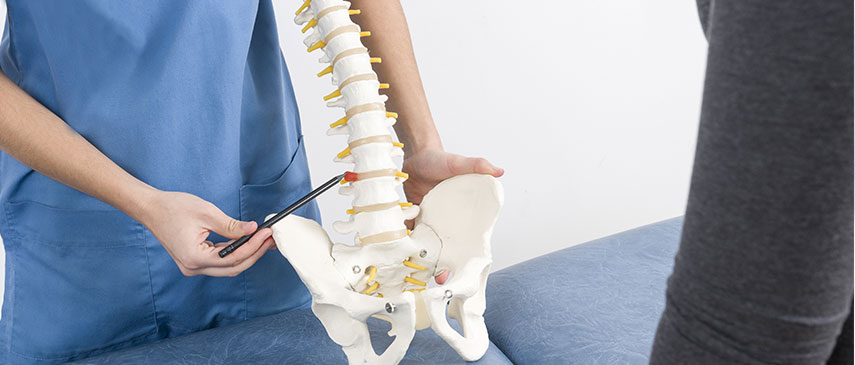For people with herniated discs or other common back ailments, yoga can offer support through strengthening the muscles along the spine and reduce or alleviate back pain altogether. When working with an injury, especially a spinal injury, it is important to learn under the watchful eyes of an experienced instructor as each injury is different.
The Structure of the Spine
Before exploring how to work with spinal pain or injury it is important to understand the elements that make up the spine and how a healthy spine operates. The spine runs from the base of the skull down to the tailbone and is made up of small bones called vertebrae that house and protect the spinal cord. Between each vertebra is a gel filled disc that works like a shock absorber for the bones of the spine. The spinal cord is made up nerves that transmit information from the brain to the rest of the body.
A herniated disc occurs when of the gel filled sacks between the vertebrae rupture, causing pain at the site of the rupture by putting pressure on the nerves. Herniated discs can be caused by an injury to the spine or by wear and tear on the body as it ages, while they can occur at any point along the spine, they usually happen in the lower back. The symptoms of disc herniation can include pain, numbness, tingling, or back ache.
Protecting the Spine to Keep it Healthy
When beginning a yoga practice it is always best to learn one on one with an experienced teacher that can offer modifications to tailor a yoga practice to suit individual needs. When working with a back injury it is especially important to maintain the natural curvature of the spine, avoiding deep forward bends or back bends that require contorting the shape of the spine.
Most importantly when working with an injury, don’t do anything that hurts. Pain is the body’s way of saying stop and it is important to listen to those signals. Every back injury will be different for every person. Sometimes it will be necessary to work with props in class to find a comfortable position in the pose, be patient and pay attention to the signals the body is sending.
Yoga Poses for Back Pain
Supta padangustasana with a strap around the ball of the foot of the lifted leg helps to keep the spine in alignment and stretches the muscles of the hamstrings and the lower back. While in the pose it is imperative to keep the spine from rounding. Give the strap enough slack so the shoulder blades can be flat on the floor and the lifted leg can be straight. Keep both sides of the waist long and extend through the heel of the leg on the floor, keeping the leg neutral (toes point straight to the ceiling).
A Simple twist on the back can help to relieve low back tension. Lying on the back with the knees drawn into the chest, take the arms out to either side and let the knees drop to one side, looking out over the opposite shoulder. Hold each side of this twist for at least five long, slow, deep breaths and allow the body to be passive. After twisting to both sides hug the knees into the chest to allow the muscles of the back to return to neutral.
